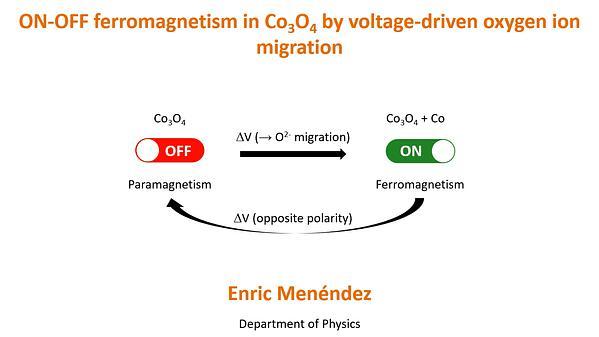Would you like to see your presentation here, made available to a global audience of researchers?
Add your own presentation or have us affordably record your next conference.
Magnetic topological textures could serve as powerful tools in the development of next-generation spintronics devices, especially in terms of stability and energy consumption. Two-dimensional (2D) magnetic solitons such as chiral domain walls or skyrmions were mostly under focus for the last decade. Beyond these 2D textures, a new interest has risen for more complex quasi-particles that display variations over the thickness, i.e., three-dimensional (3D) objects. Examples include different skyrmion phases 1, bobbers 2 or even hopfions 3. In this work, we show how by engineering Pt/Co/Al based multilayers with variable Co thickness, we observe the signature of new textures, called skyrmionic cocoons 4 that are only present in a fraction of the magnetic layers. Interestingly, these cocoons can coexist with more standard ‘tubular’ skyrmions going through all the multilayer as evidenced by the existence of two very different contrasts in the magnetic force microscopy (MFM) images recorded at room temperature (Fig. 1a). Moreover, the field dependence of skyrmionic cocoons has also been studied with Fourier transform holography measurements (FTH) with similar observations (Fig. 1b). FTH additionally puts forward various magnetic phase transitions as well as the existence of an attractive interaction between cocoons. The presence of these novel skyrmionic textures has also been investigated by micromagnetic simulations (Fig. 1c). The relaxed states can easily be identified with the different experimental contrasts: the columnar skyrmion tubes (resp. cocoons) corresponds to the strong contrast (resp. weak contrast). Thus, this coexistence of various magnetic textures in multilayers and the discovery of a novel magnetic texture are particularly interesting as they can open new paths for three-dimensional spintronics.
References 1 A.O. Mandru et al. Nature communications 11,1 (2020)
2 F. Zheng et al. Nature Nanotechnology 13, 451 (2018)
3 N. Kent et al. Nature communications 12, 1 (2021)
4 M. Grelier et al. arXiv: 2205.01172 (2022).

